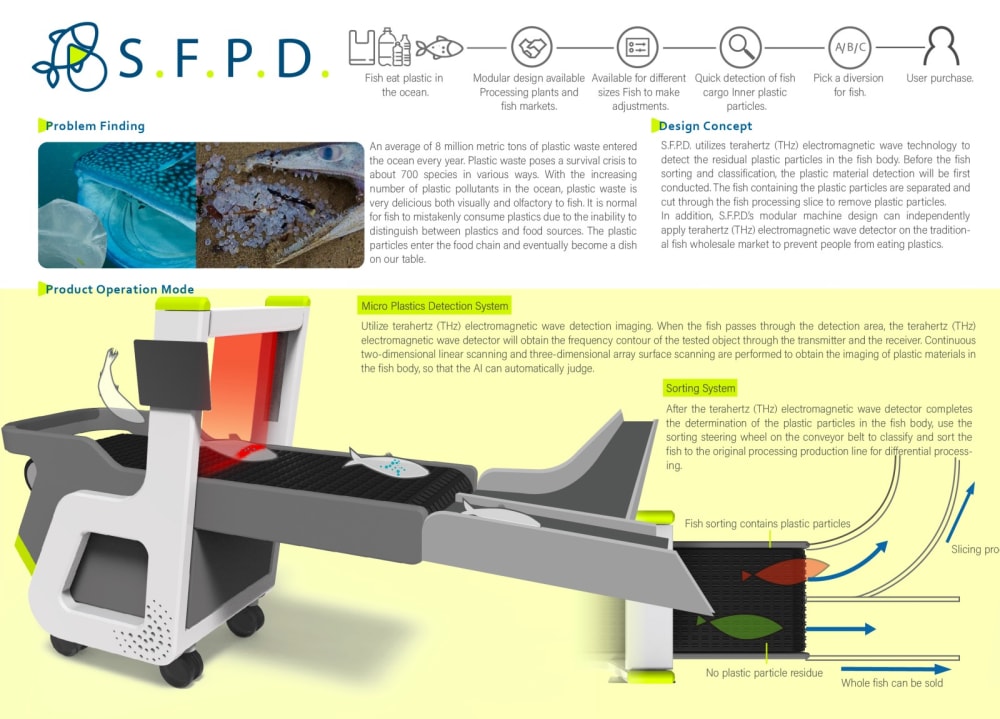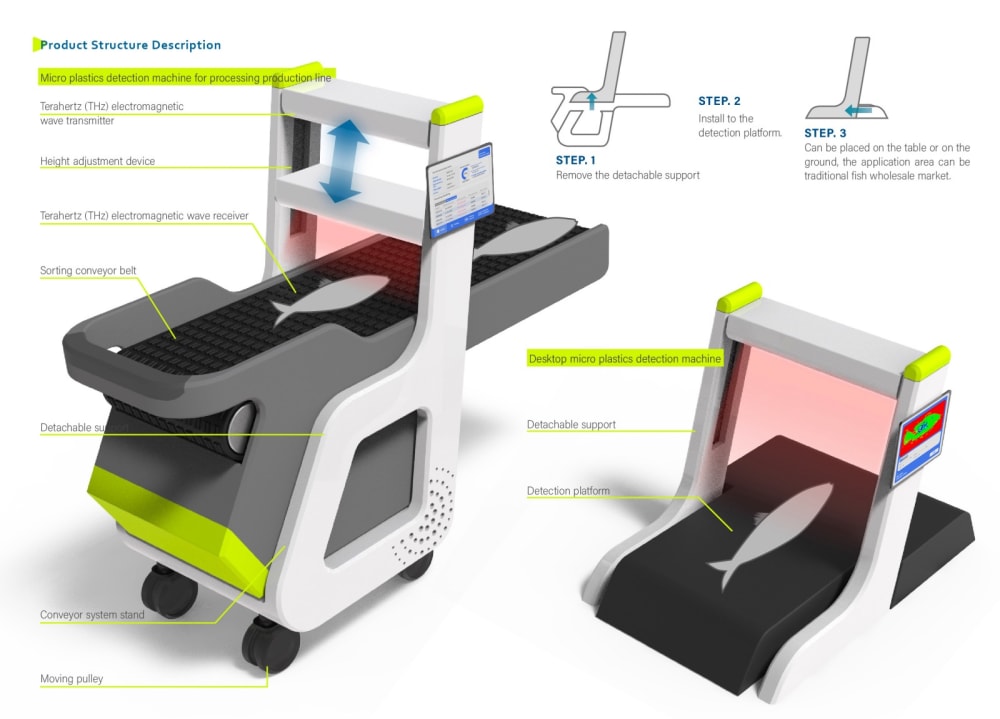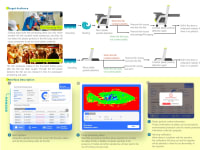S.F.P.D. utilizes terahertz (THz) electromagnetic wave technology to detect the residual plastic particles in the fish body. Before the fish sorting and classification, the plastic material detection will be first conducted. The fish containing the plastic particles are separated and cut through the fish processing slice to remove plastic particles.
In addition, S.F.P.D.’s modular machine design can independently apply terahertz (THz) electromagnetic wave detector on the traditional fish wholesale market to prevent people from eating plastics.
Like this entry?
-
About the Entrant
- Name:Min-hua Tsai
- Type of entry:teamTeam members:Min-Hua Tsai, Yi-Yun Li, I-Jie Tsay, Yu-Ching Chiu, Advisor: Prof. Kai-Chu Li
- Patent status:none








